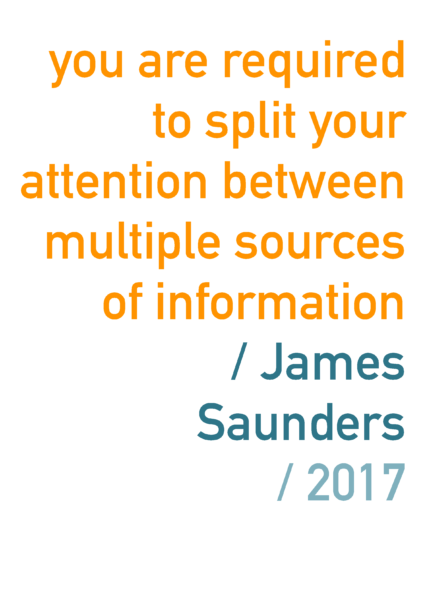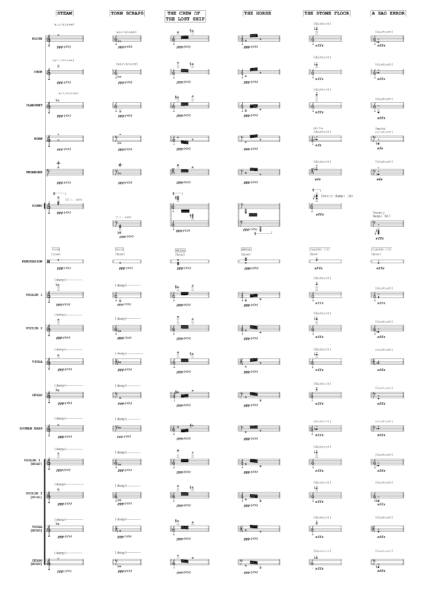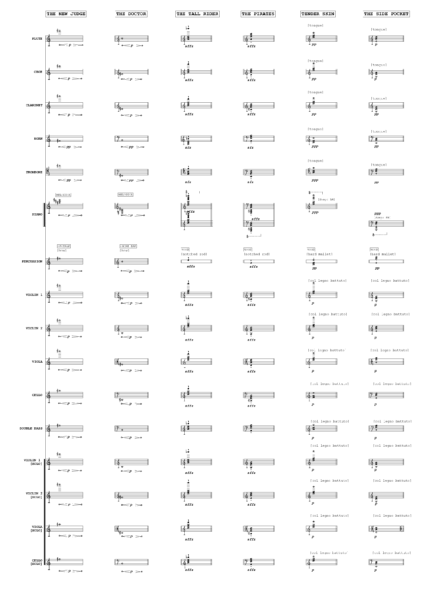you are required to split your attention between multiple sources of information presents the players with a stream of auditory cues to which they must respond with specified sounds. The cues regularly switch between different types and are directed at different sub-groups within the two ensembles, requiring the players to think and act very quickly. The piece explores cognitive load and the way we remember associations between cues and responses. Cognitive load is the amount of mental effort needed to remember things in different situations. An example of it in practice is the children’s party game where a tray of objects is displayed before being hidden, and then participants are asked to remember as many of the items as possible. The difficulty of this task is affected by the type and arrangement of the objects. In the piece, moments of ordered information are disrupted by less predictable cue sequences and regular changes of cue type. The cues include samples of real world sounds which induce a range of different responses, as well as text-to-speech computer voices reading extracts from the Harvard Sentences (a set of phonetically balanced texts developed in the 1960s to test artificial voice modelling) and giving other verbal cues. The title is adapted from Mousavi, Low and Sweller’s ‘Reducing Cognitive Load by Mixing Auditory and Visual Presentation Modes’ (1995) in which they investigate the split-attention effect and its impact on cognitive load. They argue that if subjects ‘are required to split their attention among multiple sources of information that must be mentally integrated before they can be understood, learning may be inhibited’, while suggesting that ‘if effective working memory can be increased by having two sources of information presented via different modalities, the negative effects of split attention may be ameliorated.’ In the piece, all the cues and responses are aural, requiring players to negotiate the stream of information in one mode. The increased cognitive load affects the speed of response by players and the variations in time required to complete sound-producing actions on the different instruments, producing an unpredictable trail of sounds after each cue.
Commissioned by Wien Modern. First performed by Arditti Quartet and Ensemble Modern at Wiener Konzerthaus, Vienna, 23 November 2018.
Score preview below or download from the scores page.























